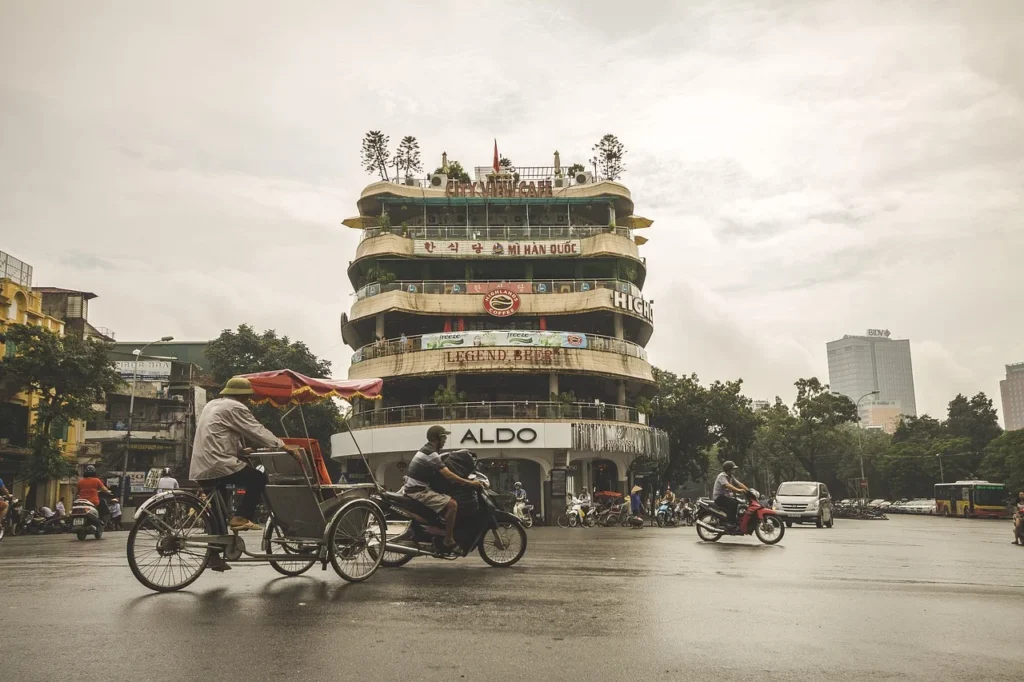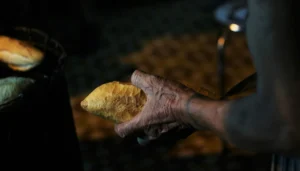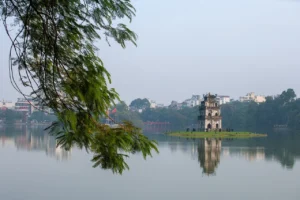Hanoi, Vietnam’s bustling capital, is home to a fascinating mix of ancient and modern elements. The city’s vibrant culture, intricate architecture, and rich history are best captured in Hanoi’s Old Quarter, also known as the Hoan Kiem District. For centuries, the Old Quarter has been a center of commerce, culture, and tradition. This article delves into the essence of this historic district, offering a comprehensive guide to understanding and exploring the heart of Hanoi.
A Glimpse into the History of Hanoi’s Old Quarter
The Old Quarter is steeped in history, dating back more than 1,000 years to the Ly Dynasty. This area initially served as a trading hub for artisans and merchants who came from surrounding villages. Over time, it developed into a vibrant marketplace where different guilds established themselves, each specializing in a unique craft or trade. These streets became known as the “36 streets of Hanoi,” each named after the goods sold there, such as Hang Bac (Silver Street)and Hang Gai (Silk Street).
The charm of the Old Quarter lies in its ability to preserve the spirit of a bygone era while adapting to the needs of a modern metropolis. Despite the influx of tourists, the neighborhood retains its authenticity, with narrow streets lined with French colonial buildings, temples, and traditional Vietnamese tube houses, which are long and narrow due to historical taxes based on street frontage.
Architectural Treasures of the Old Quarter
Wandering through the Old Quarter is akin to stepping back in time. The architecture of the Old Quarter is a unique blend of traditional Vietnamese design, French colonial influences, and remnants of past dynasties. The distinctive tube houses that dominate the area are a product of the need for space efficiency during earlier times. These homes, though narrow at the front, extend deep into the block, creating a series of interconnected spaces. Many of these buildings have been passed down through generations and remain family-owned.

Among the key architectural highlights of the district are the ancient temples and pagodas, which serve as reminders of the city’s Buddhist and Taoist roots. Notable religious landmarks include the Bach Ma Temple, one of the oldest temples in Hanoi, and the Quan De Temple, dedicated to a famous Chinese general. These temples, though often small in size, are intricately designed with rich ornamentation that reflects the area’s cultural diversity.
The Streets of Hanoi’s Old Quarter: Where Tradition Meets Modernity
The streets of Hanoi’s Old Quarter are bustling with life. Each street specializes in a particular trade or craft, continuing a centuries-old tradition. For example, Hang Ma is famous for paper goods used in religious ceremonies, while Hang Dao is known for its textile shops and Hang Quat for fans and ceremonial items. Even today, these streets are filled with locals shopping for goods, just as they have for generations.
However, in recent years, the Old Quarter has embraced a new identity as a tourist destination, offering a diverse range of products, from traditional silk to souvenirs. Boutique stores, art galleries, and cafes have popped up alongside family-run shops, offering visitors a taste of both the past and present.
As you explore the streets, the combination of old and new is palpable. Motorbikes zoom past ancient temples, street vendors sell fresh fruit next to trendy coffee shops, and the aroma of traditional Vietnamese street food wafts through the air. Pho and bun cha stalls are everywhere, giving travelers a chance to sample local cuisine in its most authentic form.
Must-Visit Landmarks in Hanoi’s Old Quarter
There are several must-see spots within the Old Quarter that capture the essence of this historic neighborhood.
Hoan Kiem Lake and Ngoc Son Temple
One of the most famous landmarks near the Old Quarter is Hoan Kiem Lake, a serene body of water that offers a peaceful escape from the busy streets. At the center of the lake is the Turtle Tower, a small pagoda that serves as a symbol of Hanoi. The lake is also home to the Ngoc Son Temple, which is accessible by the iconic Red Bridge. The temple is dedicated to several historical figures and remains an important religious site for locals.
Dong Xuan Market
If you’re looking to experience the hustle and bustle of local commerce, Dong Xuan Market is the place to go. As Hanoi’s largest indoor market, it offers a wide variety of products, from fresh produce and seafood to clothing and electronics. It’s a great place to practice your bargaining skills while immersing yourself in the local culture.
Bach Ma Temple
The Bach Ma Temple, dating back to the 11th century, is one of the oldest and most revered temples in Hanoi. This temple is dedicated to a white horse believed to have led King Ly Thai To to the site where the city was founded. The temple remains an important spiritual site and is a key cultural landmark in the Old Quarter.
The Hanoi Weekend Night Market
On Friday, Saturday, and Sunday evenings, the streets of the Old Quarter are transformed into the Hanoi Weekend Night Market. Stalls line the streets, offering a variety of goods, from clothing to crafts, as well as food vendors selling Vietnamese street delicacies. The market is a must-see for both tourists and locals, creating a vibrant atmosphere where visitors can experience the energy of Hanoi’s nightlife.
Culinary Delights in Hanoi’s Old Quarter
No visit to Hanoi’s Old Quarter is complete without indulging in the city’s incredible street food. The area is a food lover’s paradise, with stalls and hole-in-the-wall restaurants serving up some of Vietnam’s most iconic dishes. Start your culinary journey with pho, Vietnam’s famous noodle soup, traditionally eaten for breakfast. For something heartier, try bun cha, a dish of grilled pork and noodles, often accompanied by crispy spring rolls.
For those with a sweet tooth, Hanoi offers a range of traditional desserts. Sample che, a sweet dessert soup made with beans, jellies, and fruit, or banh troi nuoc, sticky rice balls filled with sweet mung bean paste.
Tips for Navigating the Old Quarter
The Old Quarter can be a maze of narrow streets and alleyways, and it’s easy to get lost. We recommend taking your time to explore and not being afraid to wander off the beaten path. Walking or renting a bicycle is the best way to get around, as the streets can become congested with traffic.
When exploring, it’s important to be mindful of the local culture. Always negotiate prices in markets, as bargaining is part of the shopping experience. Also, remember to dress modestly when visiting temples, and remove your shoes before entering.
Conclusion: The Enduring Allure of Hanoi’s Old Quarter
The Old Quarter of Hanoi is more than just a tourist destination—it’s a living, breathing reminder of Vietnam’s rich cultural heritage. From its ancient temples and bustling markets to its incredible street food and architectural wonders, this historic district offers an unparalleled window into the past and present of Vietnam’s capital city. Whether you’re exploring its streets for the first time or returning for another visit, the Old Quarter never fails to captivate and inspire.



